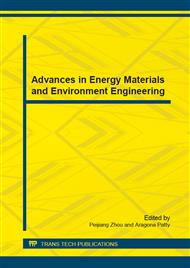p.447
p.451
p.455
p.460
p.466
p.470
p.475
p.482
p.487
Research on New Pervaporation Membranes and the Effect of Treatment of Wastewater Containing Phenol
Abstract:
The pervaporation membranes were prepared by using poly dimethyl siloxane (PDMS) as precursor, toluene as solvent, triethoxy methylsilane as cross linker, dibutyltin dilaurate as catalyst. The PDMS membranes were evaluated with permeation flux and separation factor. The effects of cross linker dosage and the operation parameters during the process of pervaporation were investigated. It was shown from the results that: The selectivity of the membranes increased while the permeation flux first increased and then decreased as the linker dosage increased; the selectivity of the membranes decreased while the permeation flux increased as the feed temperature increased; the selectivity and the permeation flux of the membranes both increased as the feed concentration increased; the selectivity and the flux also both increased as the feed flow rate increased; the selectivity increased while the permeation flux decreased as the separation press increased. When the proportion of the PDMS, solvent, cross linker and catalyst were immobile, The permeation flux and separation factor could be 98mg/(m2·h) and 5.12 when the feed temperature was 60°C, feed concentration was 0.5g/L, feed flow rate was 0.6L/min and separation press was 6KPa.
Info:
Periodical:
Pages:
466-469
Citation:
Online since:
December 2014
Keywords:
Price:
Сopyright:
© 2015 Trans Tech Publications Ltd. All Rights Reserved
Share:
Citation:



